If you’re new to gluten-free baking or just trying to master that perfect flaky scone, this gluten-free scones guide is here to help. I’ve tested my gluten-free scone recipes dozens of times to bring you all the tips, tricks, and flavor combinations you need to confidently bake buttery, tender scones that are never dry or crumbly. I’ll also walk you through the ingredients, tools, and techniques that make gluten-free scones turn out beautifully every time.

Gluten-free scones can be just as delicious as traditional ones, once you understand how gluten-free flours behave in my scone recipes. My homemade gluten-free scone recipes are designed to create soft, flaky interiors with crisp edges and just the right level of sweetness or savoriness. If you’re gluten-free or baking for family members with Celiac or gluten intolerance, these easy scone recipes are a game-changer.
In this gluten-free scone guide, I share 20 well-tested recipes, my favorite flour blends for scones, baking tips for flaky scones, and troubleshooting common gluten-free baking issues.
Looking for all my gluten-free scone recipes in one place? Browse all of my gluten-free scones recipes here. Learn all the basics about baking scones or use the Table of Contents above to jump to the scone recipes. Serve scones with breakfast, brunch, or as an afternoon snack.
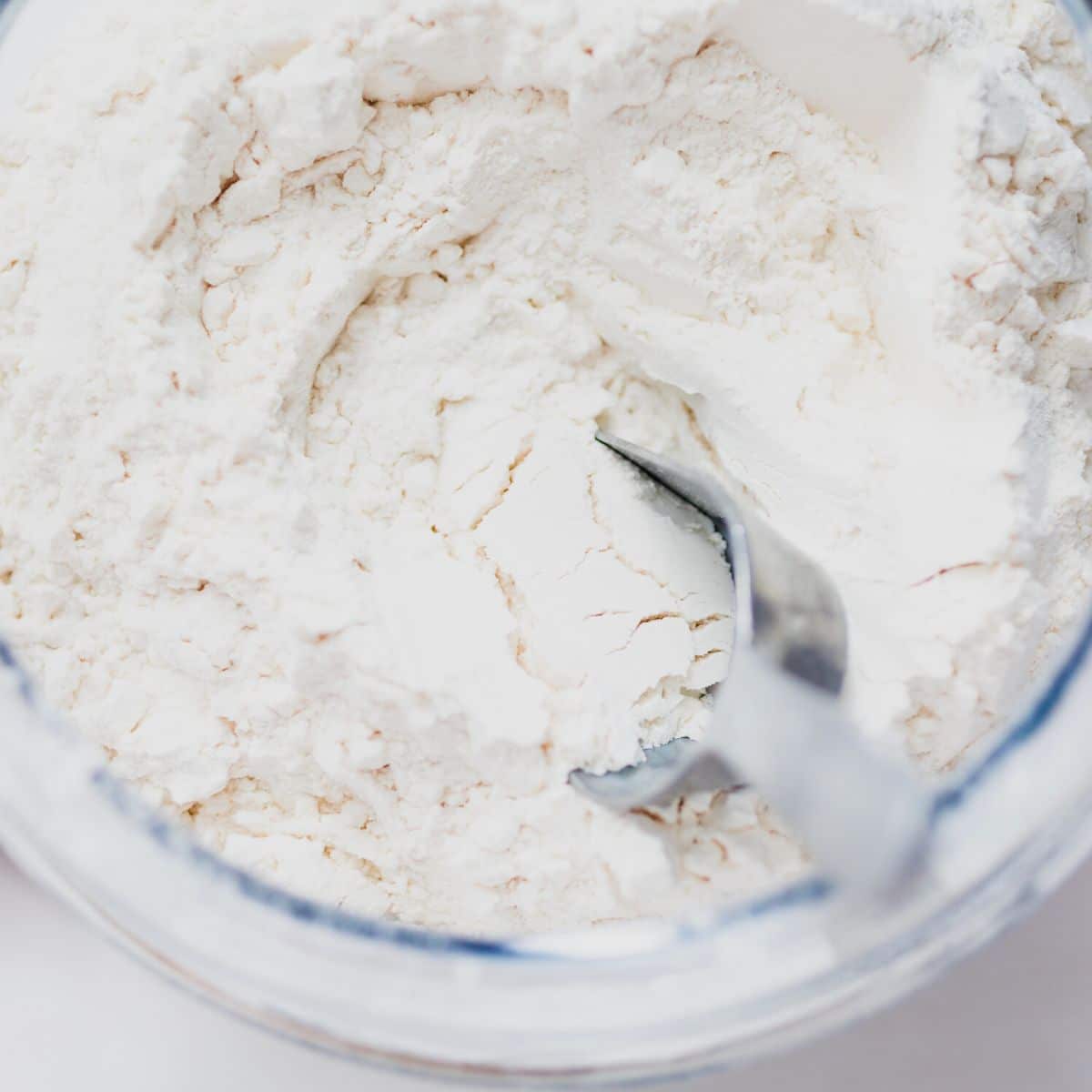
Best Gluten-Free Flour Blends for Scones:
I make gluten-free scones with several gluten-free flour blends. I have personally tested all the scone recipes I list, but I also include many reader-tested blends.
Tested by me:
- King Arthur Measure for Measure
- Bob’s Red Mill 1:1
- Namaste Organic GF Blend
- Cup4Cup
- Authentic Foods Multi-Grain Blend
- My DIY All-Purpose Flour Blend – Make my flour blend.
Tested by my readers:
These flours have worked for my readers in various scone recipes. If you’ve tested another blend successfully, please let me know in the comments!
- Divided Sunset
- Authentic Foods Cake Flour
- Doves Farm (UK)
- Better Batter
- El Faro GF Flour Artisan Blend (Canada)
You can also learn more about gluten-free flour blends and which work best, read my best gluten-free baking tips, and why binders are important in gluten-free baking.
This post may contain affiliate links. Please read our Disclosure Policy.
❤️ Sandi’s Tips for Perfect Gluten-Free Scones:
These tips apply to all of my delicious gluten-free scone recipes:
1. Always use cold ingredients. The butter must be COLD if you want the flaky layers!!
2. Check the expiration date of the baking powder. If yours is expired, the leavening will not work, and your scones will not rise.
3. Choose the right leavener. Use baking soda if your dough contains acidic ingredients like lemon juice or sourdough discard.
4. Use a binder if needed. If your flour blend doesn’t have a binder, add 3/4 teaspoon of xanthan gum.
5. Do not overmix. Stop mixing once the dough comes together to avoid melting the butter.
6. Adjust as needed. Do not be afraid to adjust the moisture slightly depending on your flour blend.
Common Gluten-Free Scone Mistakes (And How to Fix Them)
- Why did my scones turn out gritty? If your gluten-free scones turned out gritty, it is from the rice flour in the flour blend. Let the batter sit for 15-20 minutes so the rice flour can soften.
- Why don’t my scones have flaky layers? Your butter was not cold enough if you do not have flaky layers.
- Why are my scones crumbly? If your scones are too crumbly, the dough was too dry, and you need to add more liquids. Every flour blend has a different starch-to-grain ratio, which affects moisture. My rule of thumb is if your batter or dough is too runny, add more flour; if it is too thick, add more liquids.
Can I make these scones dairy-free?
Yes!! As long as the dairy-free butter is COLD, you can use a plant-based butter to make my scone recipes. I always use dairy-free milk when making scones, and I use any type you have on hand!
How to Store and Freeze Gluten-Free Scones:
- Storage – Store your scones in an airtight container. They will keep fresh for up to 3 days.
- Freezing unbaked scones – To freeze unbaked scones, shape and cut them into triangles. Flash freeze the dough triangles in the freezer, then slip them into a freezer-safe zipper bag or container. Let frozen dough thaw at room temperature for 15 to 20 minutes before baking as usual.
- Freezing baked scones – To freeze baked scones, let them cool to room temperature. Put the scones into a freezer-safe zipper bag or container. To thaw, let the scones sit on the counter or microwave them for 25 seconds.
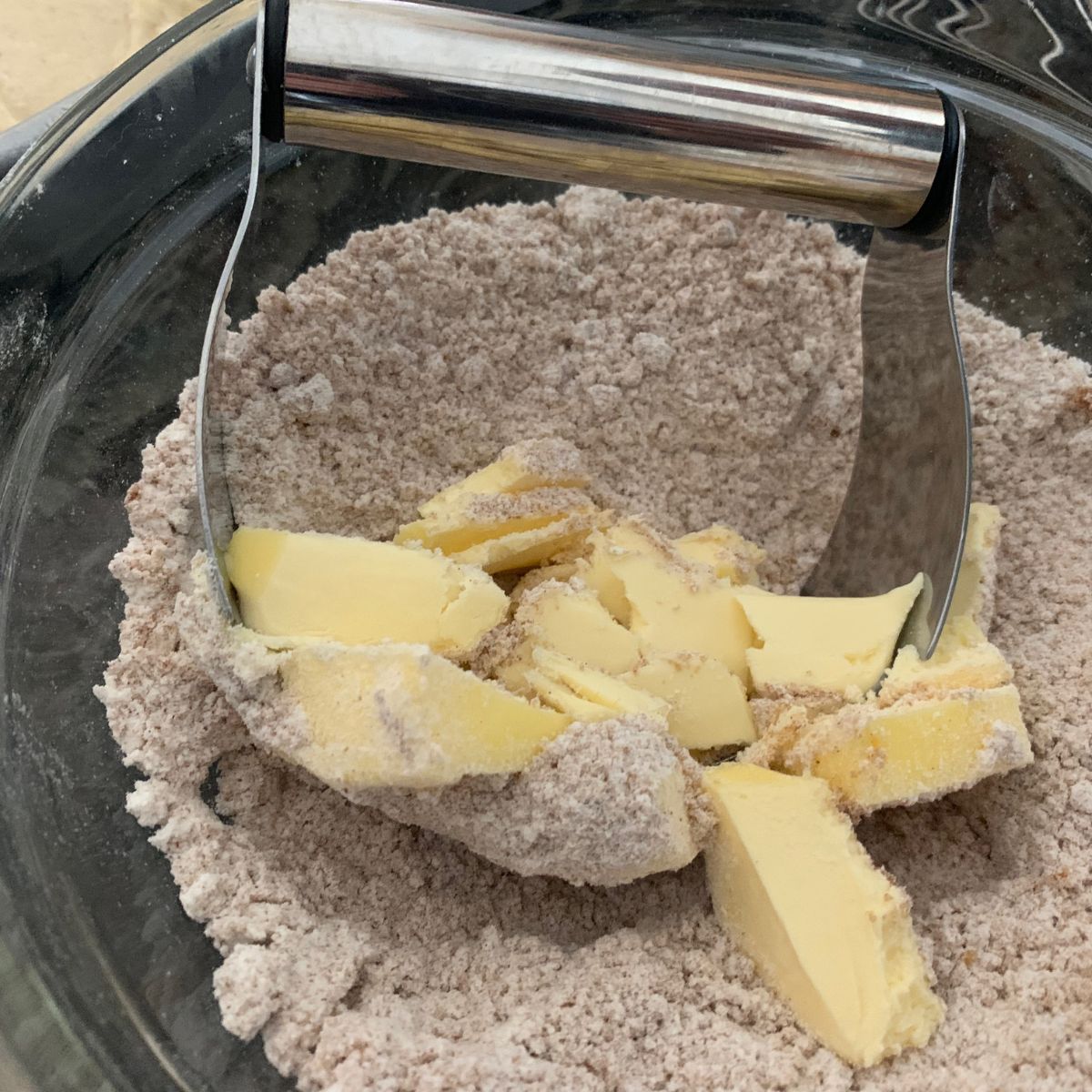
Scone Tools:
If you’re starting out, you don’t need anything fancy, just a few basics like a mixing bowl, a baking sheet, and parchment paper.
- Pastry Blender – This cuts the cold butter into the dry ingredients. Or use a cheese grater to shred frozen butter into the dry ingredients.
- Sharp Knife – Used to make cut lines before baking.
- Parchment Paper – I always recommend using parchment paper to line the baking sheet.

Email This Recipe To Me!
Classic Gluten-Free Scone Recipes:



Sweet Gluten-Free Scone Recipes
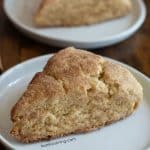

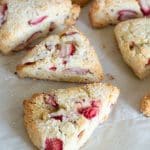


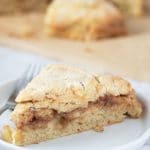

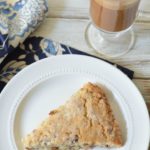


Savory Gluten-Free Scone Recipes
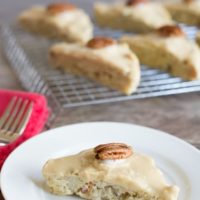
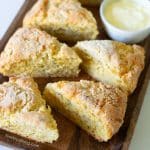

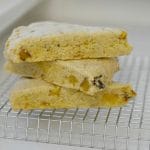

Seasonal Gluten-Free Scones
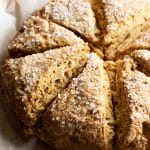
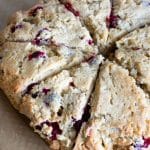

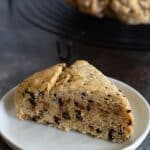

Have You Tried One of These Scone Recipes?
💬 Did you make one of these recipes? Drop a comment below, and let me know how it turned out! ⭐⭐⭐⭐⭐ Please include which flour blend you used. This will help others know this recipe is delicious. Thank you!
I truly hope you enjoy this recipe. I have been testing and creating gluten-free recipes for over 15 years. Creating gluten-free recipes that do not taste gluten-free is my goal for every recipe. Sometimes I only have to test a new recipe a couple of times, and others it takes multiple times. I do this so you get reliable, delicious results every time!

